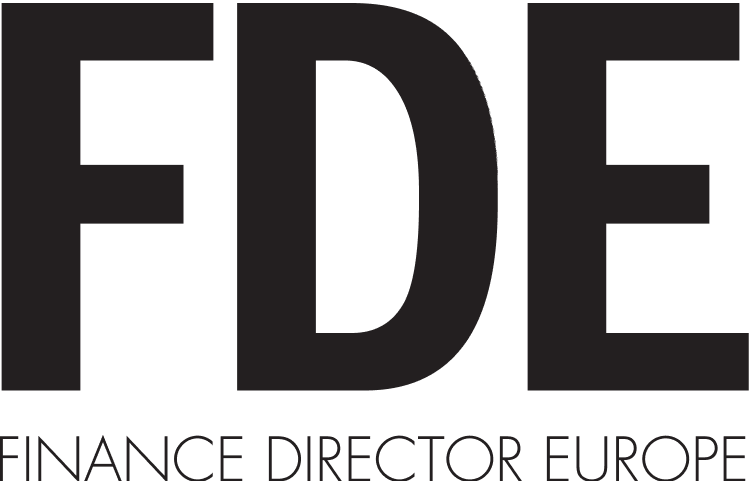
With competition intensifying, global uncertainty rising and engaging with customers changing rapidly – not least because of the pandemic – how businesses treat their customers well is more important than ever. Today, however, success depends on much more than investing in the latest CRM technology.
CRM is part of the mix, clearly, but CX depends on the ability of an organisation to adapt as its products and services evolve, as customer preferences change, and as markets shift. Rather, it involves the whole organisation – not just customer services or marketing.
Technology is certainly the backbone of a successful CX strategy. Gartner notes that shifting consumer trends in 2020 led to a ‘customer experience revolution’ – and in a recent survey it found that 68% of the CX projects in 2021 involve technology, up from 49% in 2017.
For this reason, the need to choose the right set of solutions, and the right model for implementation, cannot be overstated. The biggest challenge is that market-leading CX requires input from multiple teams – sales, customer service, marketing and many more – all of which need to work from a unified view of each customer, a single source of truth.
“Though some companies have done excellently on CX – notably Amazon, which has a very good tech stack across all departments – many companies have not been able to achieve it because they have multiple silos,” says Suvish Viswanathan, head of marketing for UK and Europe at Zoho. “There are different teams responsible for building the website, delivering the customer experience, sales calls, customer service – and there are finance and marketing teams involved.”
“Over time, the technology debt has grown,” Viswanathan adds. “Each function has software important for its own purpose, and this software works in silos such as accounting, CRM and so on. How do you bring all this together? That is where the first challenge comes.
“You need a single pane of glass through which to look at a customer profile, so the tools must work together and give multiple teams the same visibility. The integration required between internal systems from different vendors can add complexity.”
A path through the CX minefield
The results of Gartner’s latest CX survey show that 63% of business leaders believe that to build customer loyalty, their CX teams must be primarily focused on creating new and innovative experiences for their customers. On the other hand, only 30% of CX leaders feel they strike a good balance between fixing current areas of customer dissatisfaction and exploring new ideas and projects. This ‘fix-first’ strategy has limited positive impact on customer loyalty.
The survey further highlighted that 95% of business leaders believe CX teams must deliver a superior or world-class customer experience – but most CX leaders doubt their current project selection strategy can attain these goals. In fact, over 70% of CX leaders struggle to design projects that increase customer loyalty and achieve results.
There is a fundamental need to build flexibility into the CX technology stack, but much also depends on internal policies and shifts in the external regulatory environment.
“Companies must cope with policy problems, data privacy laws in different countries and a host of other local laws, so they need to know that technology vendors are compatible – and will stay compatible – with those,” says Viswanathan. “That process of adapting adds complexity and can give a broken experience to customers. It can also be a challenge for employees, as they have to draw data manually from different tools. It can be a hard gap to bridge.”
Large enterprises often find themselves being reactive to changes, rather than taking a proactive approach to enhancing CX, but choosing the right technology environment to deliver top-class CX and deliver agility can turn that around. But the challenges of different models are not always clear from the start, so great care needs to be taken in the decision-making process.
“Combining best-of-breed solutions is not always a bad choice,” believes Viswanathan. “These solutions solve a point problem and there are integration services/APIs to bring products together on a dashboard. The problem is that APIs provide limited information and limited flexibility – they are not equivalent to native integration – so maintaining the integration between solutions can be a problem.”
In this environment, someone needs to be constantly ensuring that the APIs are working, and managing the compatibility of different versions of each solution as they evolve. This can often be where the best-of-breed fails for non-tech companies, as it is hard to stay up-to-date with changes.
“Choosing a single platform with native integration has obvious advantages, but all eggs are in one basket if the vendor’s service goes down, so the entire business could come to a standstill,” adds Viswanathan. “Also large enterprises cannot switch tools easily, as they may be locked into multi-year contracts. Cost, dependency, flexibility and upgrading are all key factors to consider.”

Questions are the key
A positive customer experience can help improve customer retention and loyalty, as well as converting customers into loyal brand advocates. It depends partly on understanding customer data, partly on making CX matter to business leaders within the organisation, and partly on having the right tools – for the right price – to enable improvements to be made.
So what are the essential elements of a successful unified CX platform? What questions should an organisation ask before choosing a delivery model and selecting a vendor? Viswanathan believes that there are just a few fundamental considerations.
“You need the flexibility to integrate and exchange data with other systems, such as finance systems, so you have to look at integration beyond the CX and CRM tools themselves.”
Suvish Viswanathan, Zoho
“The first step is to look at this as one single problem to solve, though it does have many smaller components,” he remarks. “Look at it holistically, not as a sales problem, for example. Then you can find the right tools and define the right culture, which plays a big role. Tools are just enablers, but culture is the core of it as it defines what kind of CX you want to give. That depends on corporate vision, which needs to percolate down to different teams.”
“Then you need to give employees the right tools to provide exceptional CX every time, which means identifying the components that are responsible for CX,” Viswanathan adds. “Then look at employee interactivity with those tools and see how easy it is for them to fetch data and analyse it. If it is easy for them then it will be easy for the customers. Tools can only enable the culture or vision of the company.”
The next step is to assess how well a CX platform is working with existing systems within the enterprise. Integration is key, but it needs to be effective.
“You don’t want to rip out and replace everything,” remarks Viswanathan. “You need the flexibility to integrate and exchange data with other systems, such as finance systems, so you have to look at integration beyond the CX and CRM tools.”
“Next, you have to remember that no two businesses are the same,” he continues. “Each one has unique workflows, tools and policies. You cannot have a rigid system for CX. While off-the-shelf systems might do 80% of what you need, the rest is unique to your company, so you need the flexibility to build your own apps.”
This is a reflection of the fact that internal teams may be used to developing apps that reflect the specifics of the industry in which they are working. In real estate, for example, apps need to embody the specifics of selling houses or land.
“People are realising the long-term cost of these things, so we are seeing a lot of migration to Zoho CX solutions because they do the same thing as other solutions but at a much lower cost.”
Suvish Viswanathan, Zoho
“So you need to be able to refine the system, which must be configurable to your industry and your business,” Viswanathan explains. “Ask how you can customise your system and develop new apps on top. You are buying a platform, not a rigid product. There must be space for a business to develop on top of the platform. The system should not just be solving today’s problems, but should also look to the future as a business or an industry evolves.”
“Once you have that capability, next you have to look at analytics,” he adds. “There are many tools on the market for business analytics, and having advanced analytics capability in a CX platform is an absolute must. The CX solution carries most critical data, including financial data, and you need the right analytics for trends and forecasting. It is possible to integrate an analytics solution, but whatever choice you make it must be a core part of your CX strategy.” Next comes an in-depth examination of whether the implementation of a CX solution has the capacity to adapt to changing compliance requirements, as local laws around the world change to deal with issues such as data privacy.
“You need a vendor with a global operation who understands what is happening in different regions,” says Viswanathan. “You will be using their product, so you want to make sure you have all the necessary privacy and security features to safeguard your customer and employee data.”
“Only when all of these considerations have been examined can you start to look at the critical issue of long-term cost,” he adds. “It is not just the licence cost that needs to be considered, but also the cost of setting up and implementing the solution, as well as maintenance and integration. There is also the cost of money and time in getting your employees to learn how to use the new tools. The world can be very unstable, the stock market can crash, and businesses can struggle to get money from their clients, so you don’t need a burden on your finances.”
Viswanathan stresses that cost must be looked at in a holistic way, and that the licence cost is just the tip of the iceberg.
Post-pandemic prosperity
Asking the right questions of a vendor has become more important than ever over the past two years, as companies have reworked their delivery models and their customer engagement strategies to reflect the ‘new normal’ that is starting to emerge.
“In the CX area, one big thing is that now companies are really trying hard to upgrade their systems because they had to accommodate remote working and their systems were not always ready,” says Viswanathan. “It was a big change. For us, we saw changes in demand patterns from our customers. For instance, our customer service product saw a 200-300% increase in requests.”
“Suddenly, businesses needed a cloud data infrastructure rather than an Excel spreadsheet, so we saw our customers become increasingly willing to look at new tools and upgrade their existing technology. But we also saw that clients wanted more value for money, too.
“People are realising the long-term cost of these things, so we are seeing a lot of migration to Zoho CX solutions because they do the same thing as other solutions but at a much lower cost.”
The economic turmoil that stems not only from the pandemic, but also from broader global geopolitical trends, is leading many businesses to look at alternative solutions in the CX area – as they recognise how important it is for their survival and future prosperity. But rushing to choose a platform and a vendor can be fraught with danger. Armed with the right questions, however, a business can make the best choice quickly and cost-efficiently.






